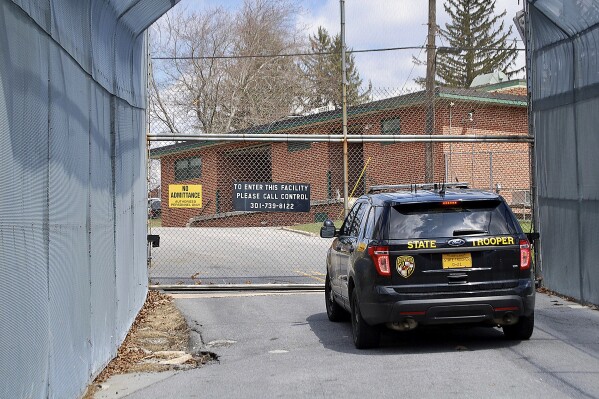Maryland Gov. Wes Moore outlines a data-driven plan to reach goals for the state
ANNAPOLIS, Md. (AP) — Maryland Gov. Wes Moore rolled out a data-driven plan he will use to help meet his administration’s goals during a town hall with state employees on Thursday.
Moore, the former head of the anti-poverty Robin Hood Foundation, described the nonprofit as a data-driven organization and said he wanted to bring his experience using data as a tool from his former job to guide his leadership as governor.
“This is going to guide us,” Moore, a Democrat, said. “It’s going to show exactly how we need to move, and it’s going to make sure that we have core benchmarks as to what success looks like ... and we’re going to have data that backs up our process.”
Moore pivoted from his State of the State address a day earlier to describe how his data-oriented plan will help meet four goals he has been highlighting: improving public safety, making Maryland more affordable as well as more competitive for business, and encouraging public service.



The governor said there were 10 priorities to help get there, with addressing child poverty at the top of the list. The plan calls for using data to help people access available tools to fight poverty, such as the earned income tax credit, child tax credits and Pell grants.
“The reason that we have to have a focus on true measurements of economic mobility and sustainable economic mobility is because we are watching how generations of concentrated poverty continue to impact every single prospect that we have as a state,” Moore said.
The other priorities the governor focused on included education, the economy, jobs, safer communities, making housing more affordable, advancing infrastructure to better connect the state’s residents to opportunities, the state’s health care system, clean energy and public service.
Moore said much of the framework to improve education already has been created with the state’s Blueprint for Maryland’s Future. That’s the state’s sweeping education reform law that focuses on expanding early childhood education, increasing teachers’ salaries, and providing aid to help struggling schools adequately prepare students for college and careers.
“We want to make sure that education is going to be the pathway to long-term economic success and long-term competitiveness for our state,” Moore said. “We have to invest in it clearly, and we have to use data and metrics to be able to show that it’s working.”
He also underscored using data to enhance accountability in the expensive K-12 funding law that is being phased in at higher costs in future years.
“Everything has to have accountability to it,” Moore said. “This cannot just be about funding numbers. That’s not the only number that’s going to matter. We need accountability. We need transparency.”
The Governor’s Office of Performance Improvement will continue to work on data availability, enhancing transparency, and elevating the use of data to drive decision-making, the governor’s office said in a news release. The office will begin publicly reporting progress on key performance indicators in early 2025.
Disclaimer: The copyright of this article belongs to the original author. Reposting this article is solely for the purpose of information dissemination and does not constitute any investment advice. If there is any infringement, please contact us immediately. We will make corrections or deletions as necessary. Thank you.




